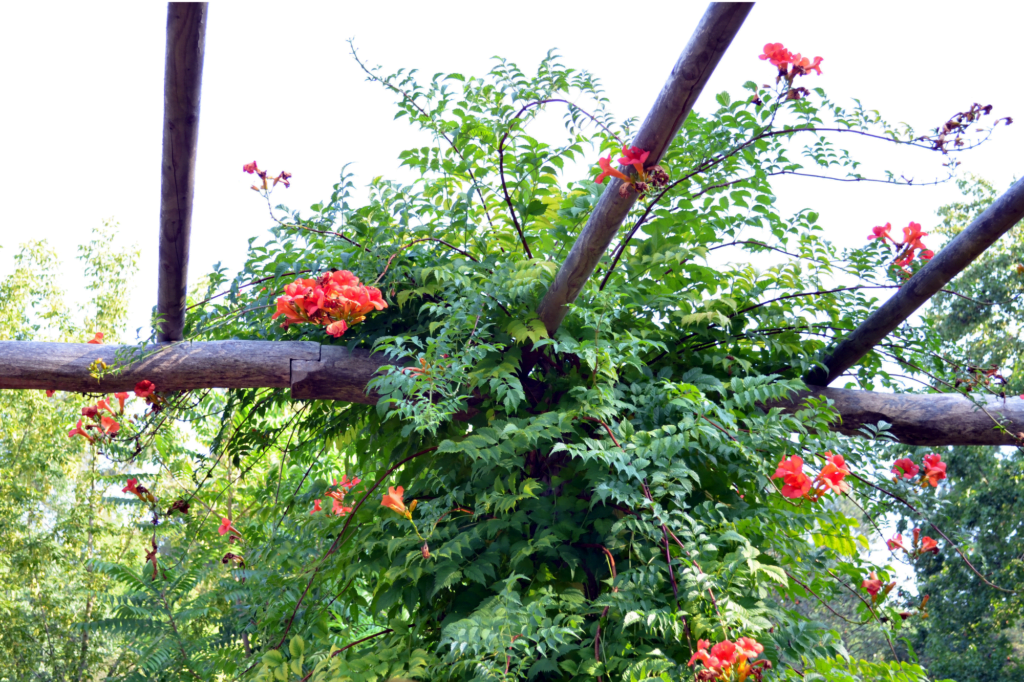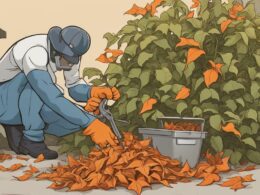Key Takeaways
- Choosing the right cedar post is key to supporting your trumpet vine’s growth.
- Training your vine to climb up the post requires patience and persistence.
- Providing support to your vine as it grows is essential for maintaining its health and appearance.
Choosing the Right Cedar Post
Before you begin training your trumpet vine to climb up a cedar post, you first need to choose the right cedar post. Cedar posts that are at least four inches in diameter and eight feet tall will provide proper support for the vine. Make sure the post is sturdy and in good condition before using it as support for your trumpet vine. When looking for a cedar post for your trumpet vine, it’s also important to consider the location. Make sure the post is placed in an area that receives plenty of sunlight and has well-draining soil. Additionally, you want to choose an area where the trumpet vine has enough space to grow and climb.
Once you have found the perfect cedar post for your trumpet vine, it’s time to prepare it for training. Remove any branches or foliage from the lower two-thirds of the post to provide ample space for the vine to climb. You can also add a trellis or other support structure to the post to provide additional support for the trumpet vine as it grows.
When looking for a cedar post for your trumpet vine, it’s also important to consider the location. Make sure the post is placed in an area that receives plenty of sunlight and has well-draining soil. Additionally, you want to choose an area where the trumpet vine has enough space to grow and climb.
Once you have found the perfect cedar post for your trumpet vine, it’s time to prepare it for training. Remove any branches or foliage from the lower two-thirds of the post to provide ample space for the vine to climb. You can also add a trellis or other support structure to the post to provide additional support for the trumpet vine as it grows.
Training the Trumpet Vine
Now that you have chosen the right cedar post, the key to getting your trumpet vine to climb up it successfully is proper training. The following steps will guide you in training your vine:
The following steps will guide you in training your vine:
- Encourage upward growth: Help your trumpet vine grow upward by tying it to the cedar post with soft twine or garden tape. Secure the vine to the post every 6 inches or so, being careful not to tie it too tight so that it has room to grow.
- Choose the right branches: Select the strongest, healthiest branches to train up the cedar post. Trim away any weak or damaged branches to direct the plant’s energy towards the strongest ones.
- Guide the vine: As the vine grows, gently guide it towards the cedar post by bending the branches towards it. Do this regularly to train the vine to grow in the desired direction.
Do Trumpet Vines Require Special Care to Prevent Leaf Dropping?
Trumpet vine leaf drop secrets: Trumpet vines require special care to prevent leaf dropping. Adequate watering is important for these vines, ensuring the soil is consistently moist. Pruning is also crucial to maintain healthy growth and prevent overcrowding. Providing proper support, such as trellises or fences, can help these vines thrive. Additionally, regular inspection for pests and diseases is essential for maintaining vibrant trumpet vine foliage.
Supporting the Trumpet Vine’s Growth
As the trumpet vine grows and climbs up the cedar post, it is important to provide support to ensure its healthy growth. There are several methods you can use to support the vine:1. Trellises
Trellises are a popular method of supporting trumpet vines. You can attach a trellis to the cedar post using wire or nails. As the vine grows, gently guide it onto the trellis, using ties or clips to secure it.2. Stakes
If your trumpet vine is still young and small, you may want to use stakes to provide support. You can use bamboo or wooden stakes and place them around the plant, securing them with ties or clips. Ensure the stakes are tall enough to allow the vine to grow upwards.3. Pruning Techniques
As the trumpet vine grows, it may become too heavy for the cedar post to support, causing it to sag or break. To prevent this from happening, you can prune the vine to maintain its shape and encourage more blooms. Prune the vine in the winter, removing any dead or damaged wood and cutting back overgrown branches.Tip: It’s best to avoid pruning the vine during the growing season as this can limit its growth and reduce the number of blooms it produces.By using these methods to support your trumpet vine’s growth, you can ensure it remains healthy and vibrant throughout the growing season.








